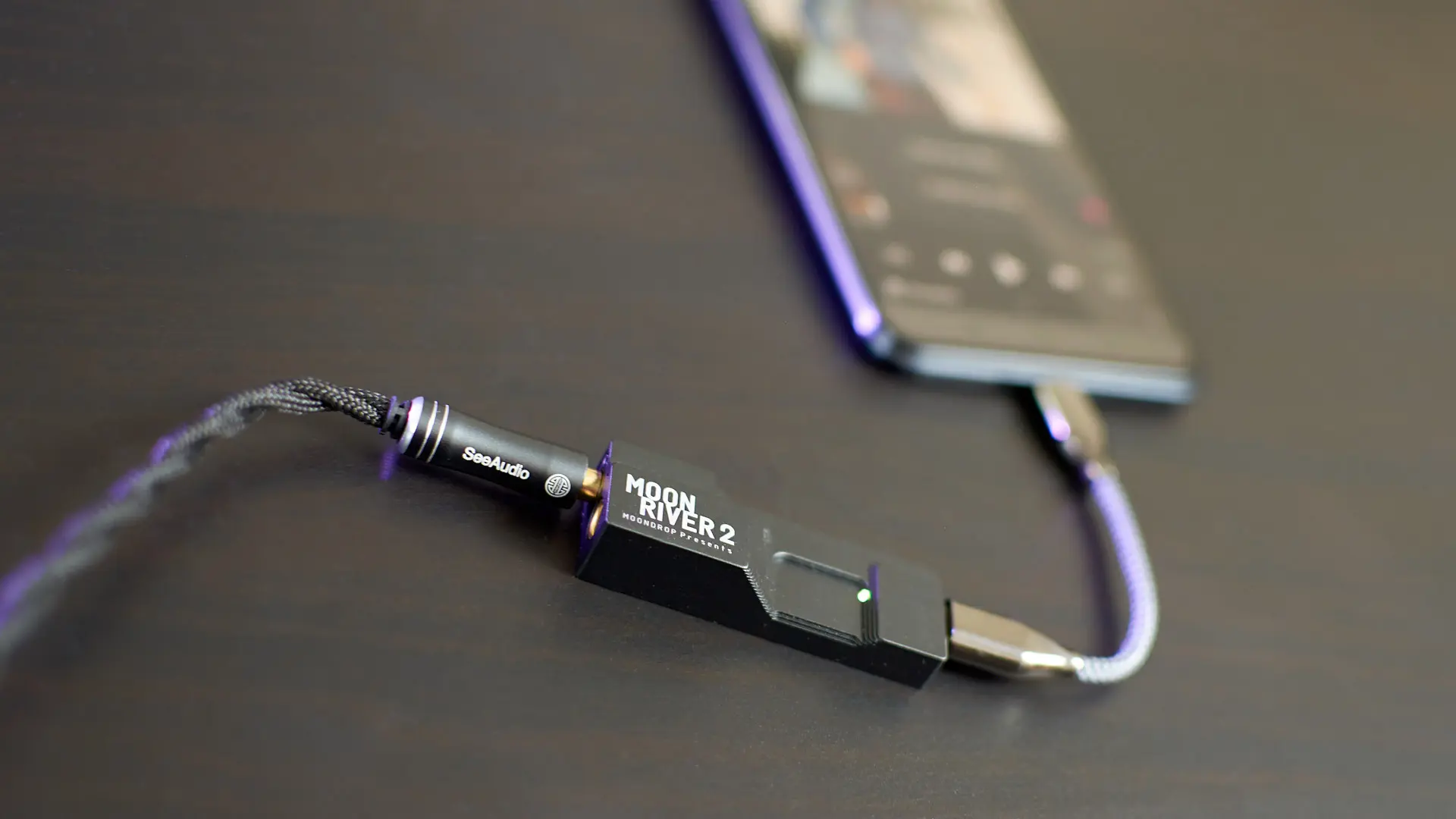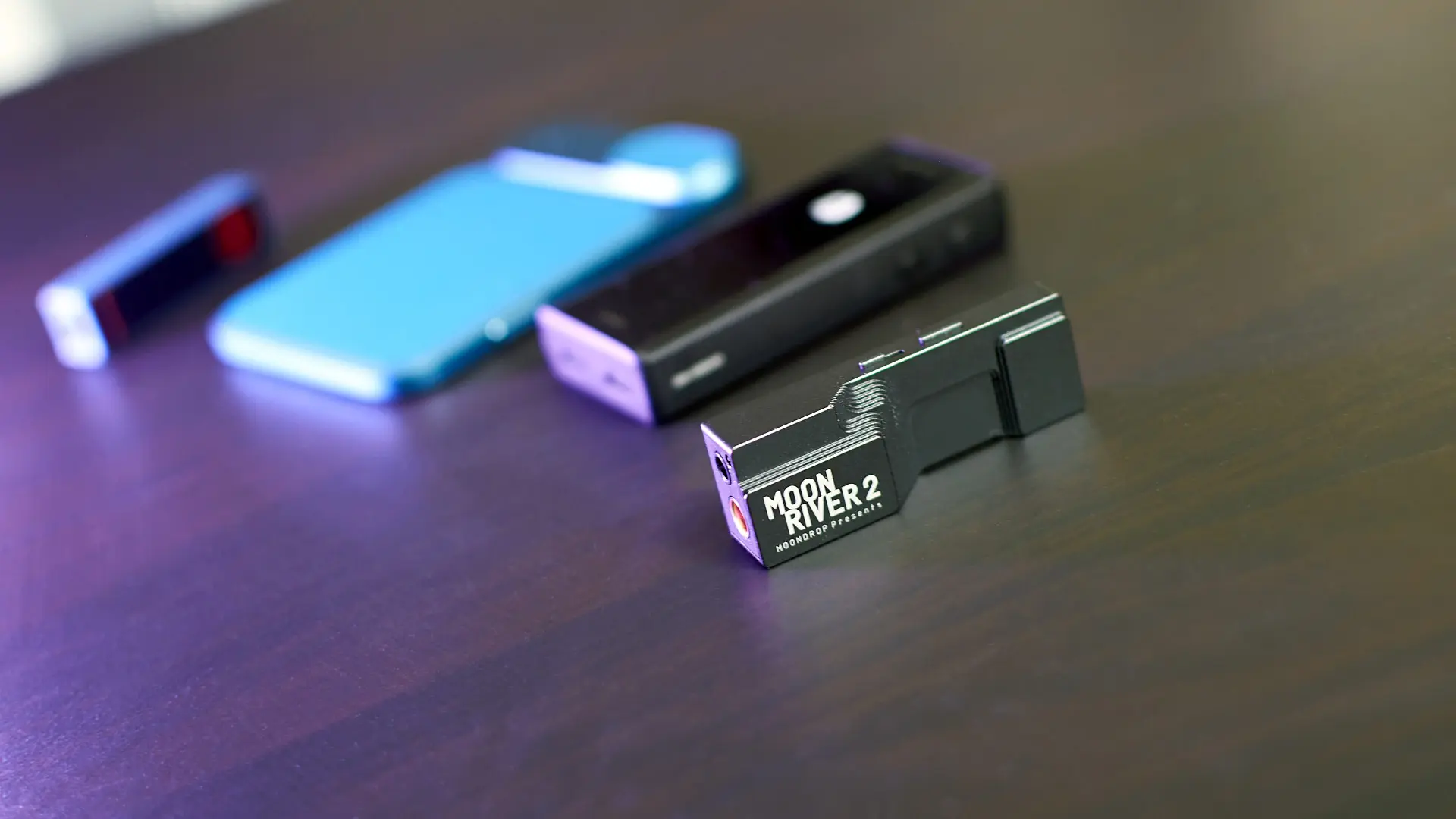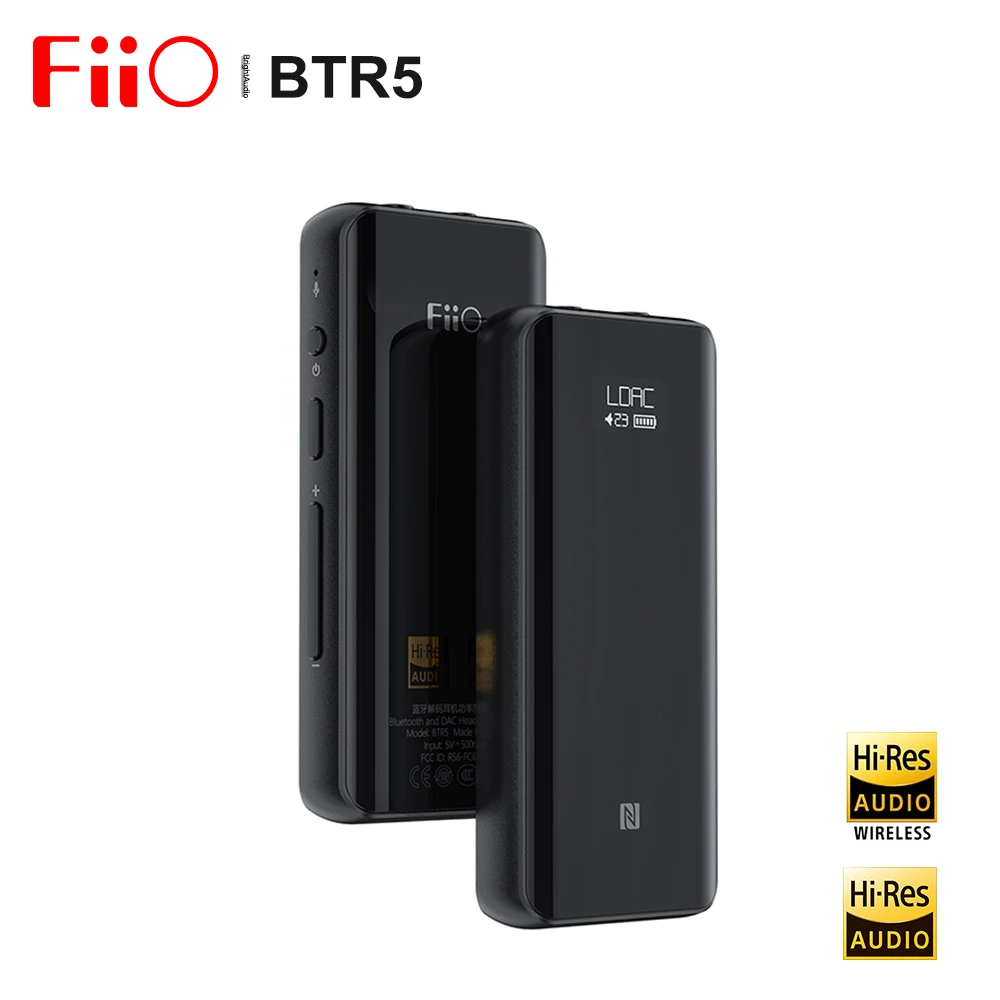Moondrop is well known for its high-quality yet affordable IEM models, with Moonriver 2 the brand is trying to achieve the same when it comes to DACs. Knowing Moondrop’s product portfolio it feels quite natural that the company has decided to design a highly portable DAC. Moonriver 2 sells for $189 and will have to prove itself against some well-known and highly regarded models of more experienced brands. Now let’s put it through the test and find out if Moondrop has managed to do that.
Features
Moonriver 2 is based around two CS43198 DAC chips. On one side you’ll find a USB-C port and that’s our digital input. There’s a bit more versatility with analog outputs, so you can use either a single-ended 3.5mm or a balanced 4.4mm Pentaconn. Balanced out delivers twice the voltage of the single-ended one so have that in mind if you want to use more power-hungry headphones. I’m not going to bother you with specs here but there is a table down below the article where you can find all the numbers.
This is a small and truly lightweight device made fully out of aluminium. Design is quite unusual and one might even say weird to some extent, but I kinda like it. Buttons are functional and easy to press, but the feel is somewhat clunky. I haven’t noticed that influencing usability in any way so it doesn’t really deduct much from the overall experience.
Finally, when it comes to the file support things look great. Both hi-resolution PCM up to 384kHz and DSD up to DSD256 are supported. MQA unfolding is not onboard but most of you are probably familiar with where I stand regarding MQA compression (yes, some of you think it is not compression and that I didn’t do my homework well, but I assure you it is and I did).
Sound
I’ve put Moondrop 2 through its paces connected both to headphones or an external amplifier. When headphones are used, this DAC actually sounds very muscular for its size. Still, this is not a call to pair it with power-hungry ones. Just like every portable DAC of this size, it will not be up to the task of driving really high-impedance headphones that require high voltage outputs to fully wake up. But if you stick to more reasonable pairings, this dongle has plenty to be proud of.
To start with overall tonality, the sound is well-balanced. Moonriver 2 is one of those devices that doesn’t have a particular character to it. I wouldn’t call it bassy, because the bassline is full but fast and grippy too. It never really calls for attention. There are plenty of details to be picked up from the recording, but the sound is not high-frequency oriented or bright either. Everything in between sounds rich and informative too, and one might even say that this DAC has a somewhat midrange-centric character. To my ears, it simply sounds well-rounded and midrange-rich but it doesn’t actually feel it is emphasizing any part of the spectrum in particular.
The soundstage is nicely developed in all directions, and the tones inside it are well separated. Each instrument has its own space, while vocals are big, bold, and upfront, as they should be. But more than that, Moonriver 2 never sounds analytical just for the purpose of being analytical. It binds all of those tones together in a natural wholesome way.

Lastly, this DAC presents music in a lively and dynamic manner that’s not always given when it comes to really lightweight and portable dongles. To up the game on this front, I had to move to chunkier, battery-powered devices or stationary desktop units. As far as these small, USB-powered devices go this is one of the most driven and most engaging DACs I’ve ever encountered, no matter the price point.
Even though Moonriver 2 sounds very good over its single-ended output, using a balanced one definitely lifts the overall level of sound fidelity a notch or even two. Because of this, I strongly recommend to any buyer to use a balanced connection if possible.
Comparisons
Dragonfly Black has been outdone several times by newer DACS at this point in time but I keep including it in my comparisons because it is still a good and known reference for many readers. Not to drag this any more than I must, Moondrop Moonriver 2 is a vastly better sounding DAC no matter how you look at it. The bassline is firmer, quicker, and more resolving. The same could be said for the rest of the spectrum too because Black just can’t match detail retrieval, layering, separation, and dynamics of Moonriver 2. Next to the newcomer, Black will simply sound stumpy most of the time.
Hidizs S9 pro comes closer than Dragonfly Black, but once again can’t completely match the detail retrieval, layering, and overall liveliness of Moonriver 2. Given the noticeable price difference between these two, I still consider both to be a worthy addition to the market. It’s up to us to decide how much fidelity we need and how much can we spend on it.

Khadas Tea costs roughly the same and comes in a slightly different form factor. It’s wider but thinner and powered by a battery. These differences don’t make any of the contenders more appealing by default, it’s more a matter of preference and personal needs. Both of these offer similar power and drive to your headphone if we’re talking about the single-ended output. Using this one, their sonics are quite matched too. The trick is that that’s the only output Khadas Tea has, while Moonriver 2 offers a fully balanced output too. Once you switch to that one, Moonriver 2 takes the lead with a wider and airier soundstage, filled with slightly more midrange details. With this output, Moondrop’s contender also manages to create a touch more nimble and grippy bassline, taking a lead with fast-paced songs.
EarMen Colibri is the last DAC in this comparison and it is also the most expensive one. While reviewing that one I said it was the best-sounding dongle DAC I’ve ever reviewed and found its price of $333 justified by its sonic skills. I don’t want to spend any more time on this particular comparison than I have to – Moonriver 2 is every bit as capable DAC when it comes to sonics as Colibri. The only difference is that instead of using a small battery, it is completely USB-powered…. and goes for half the price.
Conclusion
Moondrop made a brave move by introducing their first DAC ever into the already crowded market. Why it has the number “2” in the name is a mystery to me, to be honest. But a weird naming scheme aside, this is one of the best portable DACs on the market, and when its price is taken into the account a mighty good value too. iiWi reviews highly recommended product.
| MOONDROP MOONRIVER 2 – CHARACTERISTICS |
|
DAC chip: 2 x CS43198
|




